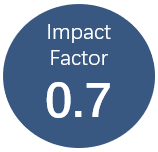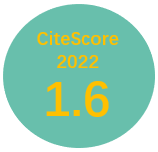China's Belt and Road Initiative and India's options: Competitive cooperation
Vol 1, Issue 2, 2017
VIEWS - 1221 (Abstract) 764 (PDF)
Abstract
Keywords
Full Text:
PDFReferences
Ahuja A and Nabar M (2012). “Investment-led growth in China: Global spillovers”. IMF Working Paper WP/12/267. Washington, DC, USA: IMF. doi: 10.5089/9781475556414.001.
Aiyar SSA (2015). “Why US allies are happy to join the AIIB”. The Diplomat. http://thediplomat.com/2015/07/why-us-allies-are-happy-to-join-chinas-aiib/.
Anderson A and Ayres A (2015). “Economics of influence: China and India in South Asia”. ExpertBrief. New York, NY, USA: Council on Foreign Relations.
Ba AD (2014). “Is China leading? China, Southeast Asia and East Asian integration”. Political Science, 66(2): 143–165. doi: 10.1177/0032318714557142.
Elek A (2014). “The potential role of the Asian Infrastructure Investment Bank”. East Asia Forum. East Asia Bureau of Economic Research.
Esteban M and Otero-Iglesias M (2015). (Spanish) “[What are the prospects for the new Chinese-led Silk Road and the Asian Infrastructure Investment Bank]”. Madrid, Spain: Elcano Royal Institute.
He Y (2014). “China’s overcapacity crisis can be overcome by overseas investment”. South China Morning Post. http://www.scmp.com/comment/insightopinion/article/1399681/chinasovercapacity-crisis-can-spur-growth-through-overseas.
Huang Y and Bosler C (2014). “China’s debt dilemma: Deleveraging while generating growth”.Washington, DC, USA: Carnegie Endowment for International Peace.
International Institute for Strategic Studies (2015). “Asian Bank: Funding infrastructure, building China’s influence”. Strategic Comments, 21(3): i–ii. doi: 10.1080/13567888.2015.1047627.
Kala AV, Zhong R and Mandhana N (2015). “Five gaps that define the China-India relationship, in charts and maps”. The Wall Street Journal. https://blogs.wsj.com/briefly/2015/05/13/5-gapsthat-define-the-india-china-relationship-in-charts-and-maps/.
Liu Z (2015). “Is China’s growth miracle over”. San Francisco, CA, USA: Federal Reserve Bank of San Francisco.
Maddison A (2004). “The world economy: A millennial perspective. Development Centre Studies. Paris, France: OECD.
National Development and Reform Commission (2015). “Vision and actions on jointly building Silk Road Economic Belt and 21st-century Maritime Silk Road”. White paper. Beijing, China: Ministry of Foreign Affairs and Ministry of Commerce of the People’s Republic of China.
OECD (2016). Development Cooperation Report. Paris, France: OECD.
Panda J (2014). “Maritime silk road and the India-China conundrum”. Indian Foreign Affairs Journal, 9(1): 23–32.
Pettis M (2015). “Will the AIIB one day matter”? Carnegie Endowment for International Peace.
Sharma R (2016). “The rise and fall of nations: Forces of change in the post-crisis world”. New York, NY, USA: WW Norton Inc.
Zhao H (2015). China’s new maritime silk road: Implications and opportunities for Southeast Asia. Singapore: Institute of Southeast Asian Studies (ISEAS) Publishing.
DOI: https://doi.org/10.24294/jipd.v1i2.83
Refbacks
- There are currently no refbacks.
Copyright (c) 2017 Ajay Chhibber

This work is licensed under a Creative Commons Attribution-NonCommercial 4.0 International License.

This site is licensed under a Creative Commons Attribution 4.0 International License.










